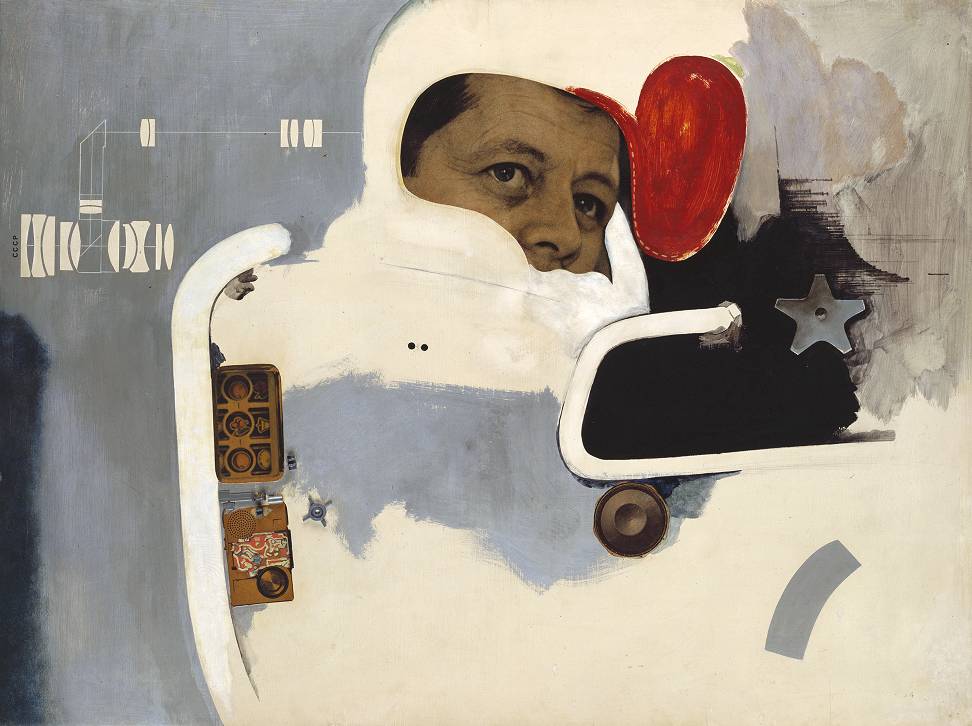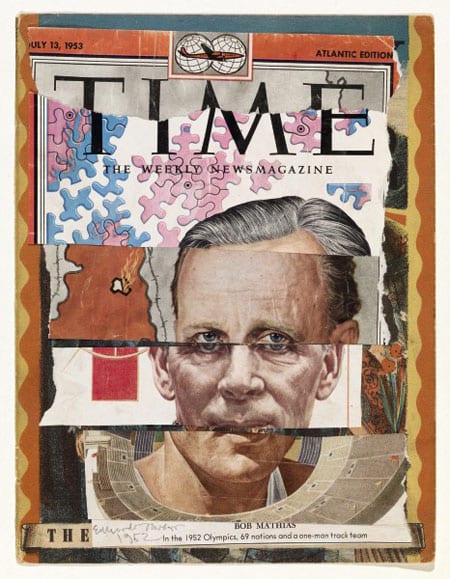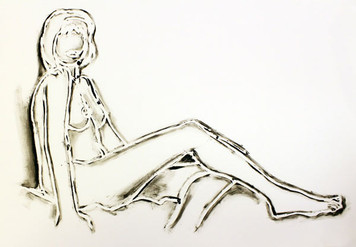Pop Art is an art movement that emerged in the late 50's and early 60's. It is one of the most liberating moments in the history of art. Breaking the rules of classic art endorses the new culture of technology and consumerism by representing every manner of objects from visual and popular culture. Every object can become art, that is why this movement brings and end to the division between 'high' and 'low' culture. It includes different styles of painting and sculpture from various countries. This post recaps the various themes of this movement.
Collage Advertising Comics
Pop art acquires the tradition of the collage from cubism and dadaism but it adds a subversive and allegorical component. This new tendency, turned comic strips into large-format paintings.
The precursors of this art were Richard Hamilton and Eduardo Paolozzi, members of the independent Group in London, along with works by the American Ray Johnson. In addition to this, Roy Lichtestein pop first painting is an embodiment of Pop Art definition that conceals a paradox between classic art and modern art. It certainly appears to be an enlarged panel from a comic book, but it is also a Pop version of the myth of Narcissus.
Finally, Andy Warhol was also a member of this new way of painting with his Mickey Mouse propagandistic representation.
.jpg) |
| Roy Lichtestein, Look Mickey, 1961 |
 |
| Richard Hamilton, Together let us explore the stars 1962 |
 |
| Eduardo Paolozzi, One Man Track Team 1953 |
Emblems
It is a well known fact that in the mid-20th, advertising slogans, the brand names and logos for consumer products had inundated society and were publicized non stop in the press, radio and television... Predictably, they provided a torrent of visual ideas for Pop artists.
For instance, Jasper Johns, appropiated several universally recognize objects such as a bullseye target , as did Peter Blake some time afterwards. Warhol began to represent certain everyday objects repeatdly including logos and trademarks like ‘Green Stamp’ loyalty coupons, Cambell’s soup cans, Brillo soup pads, Heiz ketchup and Coca-Cola. Robert Indiana turned a series of different words like ‘eat’, ‘hug’ and ‘err’ into emblems which he stenciled onto various supports.
For instance, Jasper Johns, appropiated several universally recognize objects such as a bullseye target , as did Peter Blake some time afterwards. Warhol began to represent certain everyday objects repeatdly including logos and trademarks like ‘Green Stamp’ loyalty coupons, Cambell’s soup cans, Brillo soup pads, Heiz ketchup and Coca-Cola. Robert Indiana turned a series of different words like ‘eat’, ‘hug’ and ‘err’ into emblems which he stenciled onto various supports.
 |
| Andy Warhol, Coca Cola 210 bottles 1962 |
 |
| Andy Warhol, Heinz Tomato Ketchup box, 1964 |
 |
| Robert Indiana, love 1966 |
Myths
During this golden era, the film industry also grew strongly. Hollywood became a myth-making machine: Marilyn Monroe, Elizabeth Taylor, Marlon Brando, James Dean… Those actors who archieved success in the Dream factory immediatly became idols for the general public and many of them are featured in the work of Pop art artists.
Alex Katz was one of the first that portrayed famous people. Warhol immortalized Marilyn Monroe transforming her into object of veneration. Moreover, Mimmo Rotella transfigured Elizabeth Taylor, in her role as the queen of Nile in a majestic décollage of the poster of the film Cleopatra. In short, British Pop artists were able to combine the media power of the great American idols with specific elements from their own popular culture.
Alex Katz was one of the first that portrayed famous people. Warhol immortalized Marilyn Monroe transforming her into object of veneration. Moreover, Mimmo Rotella transfigured Elizabeth Taylor, in her role as the queen of Nile in a majestic décollage of the poster of the film Cleopatra. In short, British Pop artists were able to combine the media power of the great American idols with specific elements from their own popular culture.
 |
| Andy Warhol Marylin Monroe 3x3, 1967 |
 |
| Alex Katz, Ted Berrigan 1967 |
 |
| Andy Warhol, Self-portrait 1986 |
 |
| Allen Jones, Self portrait 1981 |
Warhol marks the turning point at which the model of the portrait fades away and becomes a virtual image. In his series of self-portraits, the artist also meditates on death. Allen Jones, for his part, explores deeply the portait through the sitter .
Finally, David Hockney makes use of immediacy of Polaroids as the basis for his portraits.
 |
| David Hockney, Kasmin 1982 |
Landscapes, Interiors, Still Lifes
 |
| Tom Wesselmann, Still life, 1963 |
Lichteinstein’s landscapes based on Expressionism, Patrick Cauldfield’s and Valeiro Adami’s interiors are some of the examples of this reinterpretation of art.
Urban Eroticism
The middle years of the 20th century brought a transformation of social attitudes with it a new sexual freedom encouraged the spread of eroticism in every sphere of society. As a result, mass media became inundated with erotic metaphors featuring seductive women and attractive men. This immediately, influenced Pop Art representations.
The voluptous women of Richard Lindner and Allen Jones have the quality of erotic fetishes. James Rosenquist marked by almost photographic realism, women and automobiles alike are transformed into objects of desire. Wesselmann represented allegories of women as sexual symbol. |
| Tom Wesselman,Monica sitting one leg on the other 1986 |
 |
| Richard Lidnet,Tank you 1971 |
An essential part of Pop art iconography were the Historical events and contemporany affairs. Historical paintings of Pop Art artists were inspired by the huge amount of news and images coming from the mass media.
Major historical figures like Mao Zedon, John F.Kennedy, Richard Nixon, Franco... are the protagonists of paintings that reflect this existential mass of news bringing the point of view of Warhol,Rotella,Richter, Juan Genovés...
Major historical figures like Mao Zedon, John F.Kennedy, Richard Nixon, Franco... are the protagonists of paintings that reflect this existential mass of news bringing the point of view of Warhol,Rotella,Richter, Juan Genovés...
Art about Art
Pop art artists wonder about the evolution of art that is why an essential part of Pop art led to the subject of 'art on art'.
For instance Warhol creates new versions of Boticelli using photographs, Hockney ruminates on Rennaissance art, Alain Jacquet parodies Manet paintings...
For instance Warhol creates new versions of Boticelli using photographs, Hockney ruminates on Rennaissance art, Alain Jacquet parodies Manet paintings...
 |
| Alain Jacquet, déjeuner sur l'herbe 1963 |
 |
| Manet, déjeuner sur l'herbe 1863 |
.jpg)






Outstanding, Natalia. Congratulations!
ReplyDeleteBLOG POST 6: POP ART MYTHS
--> RECAP (form & content): 14/14
--> ILLUSTRATION (incl. captions): 05/05
--> LABELS: 01/01
--> TOTAL: 20/20
Hello the topic is very well treated thanks
ReplyDelete